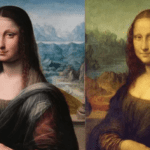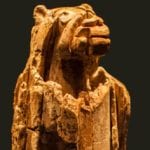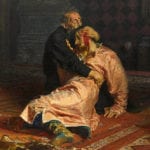 Weird Stuff
Weird Stuff  Weird Stuff
Weird Stuff  Mysteries
Mysteries 10 Tragic Disappearances and Deaths in Joshua Tree National Park
 History
History 10 Ways Childhood Really Sucked in the Old West
 Music
Music 10 Name Origins of Famous Bands from the 1990s
 Religion
Religion 10 Biggest Turnarounds by the Catholic Church
 Weird Stuff
Weird Stuff 10 Unbelievable Times Laws Had Unintended Consequences
 Humans
Humans Ten Historic Women Who Deserve Way More Credit Than They Got
 Movies and TV
Movies and TV 10 Films That Spawned Major Lawsuits
 History
History Ten Times Towns Were Wiped Off the Face of the Earth
 Creepy
Creepy 10 of the Most Disturbingly Haunted Public Houses in the UK
 Weird Stuff
Weird Stuff 10 Niche Subcultures That Are More Popular Than You Might Think
 Mysteries
Mysteries 10 Tragic Disappearances and Deaths in Joshua Tree National Park
 History
History 10 Ways Childhood Really Sucked in the Old West
Who's Behind Listverse?

Jamie Frater
Head Editor
Jamie founded Listverse due to an insatiable desire to share fascinating, obscure, and bizarre facts. He has been a guest speaker on numerous national radio and television stations and is a five time published author.
More About Us Music
Music 10 Name Origins of Famous Bands from the 1990s
 Religion
Religion 10 Biggest Turnarounds by the Catholic Church
 Weird Stuff
Weird Stuff 10 Unbelievable Times Laws Had Unintended Consequences
 Humans
Humans Ten Historic Women Who Deserve Way More Credit Than They Got
 Movies and TV
Movies and TV 10 Films That Spawned Major Lawsuits
 History
History Ten Times Towns Were Wiped Off the Face of the Earth
 Creepy
Creepy 10 of the Most Disturbingly Haunted Public Houses in the UK
10 Fascinating Models in Famous Art
I should start out by saying that I have never studied art and know very little about it. I don’t know what makes a good painting great, or a great painting a masterpiece, but I do know what makes one famous. That would be any painting that even a guy like me would recognize. This list is not about colors, depth of field, symbolism, interpretation or why the artist chose to paint on beaverboard over canvas. This list looks at the personal lives of the people that have posed as subjects or models in 10 well known paintings – a subject that I feel is never discussed enough. Please comment if anyone feels the information I have gathered is not entirely accurate, or if you have any other interesting facts on these subjects and models.
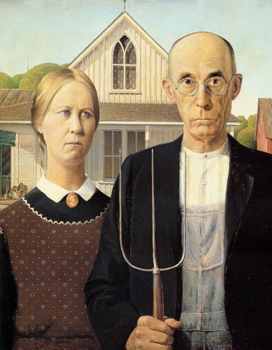 Artist: Grant Wood 1891 –1942
Artist: Grant Wood 1891 –1942
Year Painted: 1930
Grant Wood painted American Gothic as the United States was entering the Great Depression. Wood was looking for models that would capture the essence of hard-working Middle America. The artist decided on using the family dentist, Dr. B.H. McKeeby (1867–1950), to model for the older man and his sister, Nan Wood (1899–1990), for the younger woman. The two, reluctantly, posed for the painting after Wood assured them that they would not be recognized. The models never stood in front of the house, and sat separately for the painting. The painting became one of the most famous images in the world, and one of the most parodied. Nan married a real estate investor and spent the rest of her life as a historian for her brother’s work. Dr. McKeeby kept the practice that he established in 1901 in Cedar Rapids, Iowa, almost until his death. You can see Dr. McKeeby and Nan Wood standing next to the famous painting here.
Interesting Fact: There is something of a debate as to whether the painting is meant to depict a husband and wife. Many experts believe that Wood painted them as a couple, originally. It is also said that Nan Wood was embarrassed at being depicted as the wife of someone twice her age, and began telling people that the painting was of a man and his daughter. In a letter written by Grant Wood in 1941, he seems to confirm that the woman is the man’s “grown up daughter”. You can read the actual letter here.
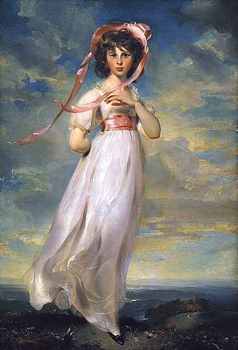 Artist: Thomas Lawrence 1769 –1830
Artist: Thomas Lawrence 1769 –1830
Year Painted: 1794
Pinkie is the portrait of Sarah Barrett Moulton, who was approximately eleven years old when she was painted. Sarah was the daughter of a wealthy Jamaican plantation owner named Charles Barrett Moulton. She was born and raised in Jamaica, and traveled to England to further her education. While in England her grandmother commissioned Thomas Lawrence to paint the, now famous, portrait. Sadly, Sarah died on April 23, 1795, just one year after the portrait was completed, due to whooping cough, which she most likely contracted from one of her brothers. Her brother Edward, who would later own the portrait, changed his surname to Moulton-Barrett and became the father of one of the most prominent poets of the Victorian era, Elizabeth Barrett Browning, making Sarah Elizabeth’s aunt.
Interesting Fact: Prints of Pinkie and The Blue Boy are often sold or displayed together, as if they are related in some way, or painted by the same artist. They are actually works by different artists, and painted a quarter century apart. Both works are now the property of The Huntington at San Marino, California, where they hang across from one another in the same room.
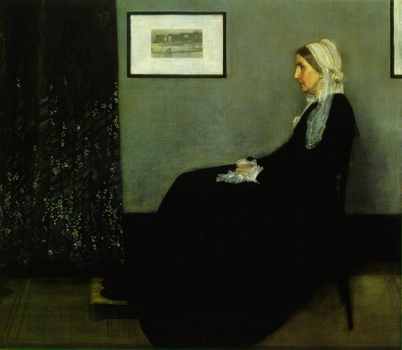 Artist: James McNeill Whistler 1834 –1903
Artist: James McNeill Whistler 1834 –1903
Year Painted: 1871
Most would consider Whistler’s Mother a strictly all American iconic symbol. However, many are not aware that she was actually painted, and died, outside the US. Anna McNeill Whistler was born in 1884 in North Carolina. In 1831, she married widower George Washington Whistler, and inherited 3 stepchildren. Anna gave birth to two sons, James and William. She also had two other sons who died at a young age. In 1842 the family moved to Russia when her husband was hired as a railway engineer. After her husband died from cholera in 1849, she returned to the US to live in Connecticut. During the Civil War, Anna crossed lines to be with William, who was a surgeon in the Confederate Army. She then went to London where James moved after getting kicked out of West Point. Anna encouraged his painting and agreed to pose for her son. James then painted the now famous ‘Arrangement in Grey and Black No.1 Portrait of the Artist’s Mother” commonly referred to as “Whistler’s Mother.” Anna died in Hastings, England, in 1881. James arranged for her burial in the Borough Cemetery, and on her white gravestone is inscribed: “Blessed are they who have/not seen/And yet have believed.”
Interesting Fact: Anna’s husband, George (”Whistler’s Father”), was actually a very prominent railroad engineer. Stone arch railroad bridges that he built in 1841 are still in freight and passenger service in western Massachusetts. He also invented a system of communication between the locomotive engineer and the train crew, known as ‘Whistler’s Trumpet’. While in Russia, he served as consultant on the building of Russia’s first major railroad, the Moscow-Saint Petersburg Railway. He is also credited with selecting the five-foot rail gauge that is still used in Russia and neighboring countries. For his efforts he was awarded the Order of St. Anna from Tsar Nicholas.
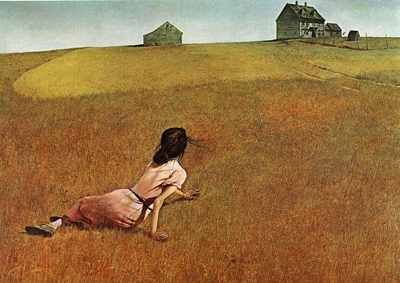 Artist: Andrew Wyeth (1917– 2009)
Artist: Andrew Wyeth (1917– 2009)
Year Painted: 1948
Andrew Wyeth was inspired to create this painting at his summer home in Cushing, Maine, when he was looking through his window and saw a woman crawling across a field. The woman’s name is Christina Olson (1893-1969). Christina had a degenerative muscular disorder (sometimes identified as polio) that took away her ability to walk. Wyeth met Olson and her brother, Alvaro, in 1939 when they were introduced by a woman named Betsy. Betsy would later become the artist’s wife, and also a summer resident in Cushing. There are two models who posed for the woman in this painting. The figure’s thin legs, arms and pink dress belong to Christina Olson, who was in her mid 50’s at the time. The head and torso belong to Wyeth’s wife Betsy, who was in her mid 20’s at the time. Christina Olson lived in her house her entire life, and neighbors say she had no idea that she, or her house, had become famous. In the year 2000, Andrew and Betsy Wyeth celebrated their 60th wedding anniversary.
Interesting Fact: A friendship developed between the artist and the Olsons, and Wyeth was even allowed to use an upstairs room as a studio. The Olson House was placed on the National Register of Historic Places in 1995. You can see a photo of the Olson’s House as it appears today here.
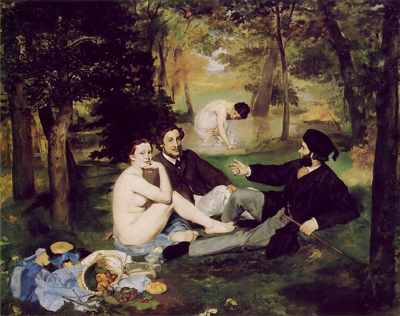 Artist: Édouard Manet 1832-1883
Artist: Édouard Manet 1832-1883
Year Painted: 1862/63
Manet created quite a stir with the French public when this painting went on display in 1863. There are actually two people who modeled for the nude woman. Manet used his favorite model, Victorine Meurent (1844- 1927), for the woman’s face and his future wife, Suzanne Leenhoff (1830-1906), for the woman’s body. Suzanne Leenhoff had a ten year relationship with Manet before they finally married in 1863. The two met when Suzanne, who was a musician, was hired by Manet’s father to give Edouard and his brother, Eugene, piano lessons. During their ten year relationship, Suzanne gave birth to a son, Leon Koella. Both Manet and his father have been proposed as the boy’s natural father. Leon was introduced to other people as Suzanne’s younger brother. The face model, Meurent, was also an artist and had many exhibits at the prestigious Paris Salon. The two men in the painting are Manet’s brother, Eugene and his future brother in law, Ferdinand Leenhoff.
Interesting Fact: A painting by Victorine Meurent, called Le Jour des Rameaux or Palm Sunday, was recovered in 2004, and is the only surviving example of her art work. You can see the painting here.
 Artist: Pablo Picasso 1881 –1973
Artist: Pablo Picasso 1881 –1973
Year Painted: 1937
If you are familiar with Picasso’s work you will know the model used for this painting is Dora Maar (1909-1997). Maar was a French photographer, poet and painter. She was also Picasso’s mistress, from 1936 until 1944. They were introduced when she was 29 and Picasso 54. In the course of their relationship, Picasso said this about Maar, “For me she’s the weeping woman. For years I’ve painted her in tortured forms, not through sadism, and not with pleasure, either; just obeying a vision that forced itself on me. It was the deep reality, not the superficial one.” “Dora, for me, was always a weeping woman….And it’s important, because women are suffering machines”. Maar was an independent artist, but she eventually came to suffer from their relationship after after discovering she was unable to have children. Picasso also referred to Dora as his “private muse”. She spent her last years living, alone, in a house near Paris that Picasso had given her.
Interesting Fact: In 2006, another one of Picasso’s portraits of her (“Dora Maar with Cat”) was auctioned at a closing price of $95,216,000, making it the world’s second most expensive painting ever sold at auction. You can see most of Picasso’s paintings and sketches of Dora Marr here.
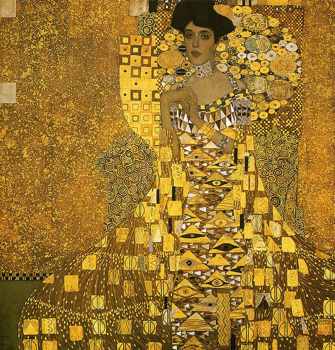 Artist: Gustav Klimt 1862 –1918
Artist: Gustav Klimt 1862 –1918
Year Painted: 1907
Adele Bloch-Bauer was born in Vienna, Austria, in 1881, into a wealthy Jewish banking family. In 1899, at age 17, she married sugar magnate and banker Ferdinand Bloch Bauer. Ferdinand was a major patron of Gustav Klimt, and commissioned him to paint a portrait of Adele. In 1907, three years and hundreds of sketches later, Adele’s portrait was completed. Klimt would go on to paint Portrait of Adele Bloch-Bauer II, in 1912. Adele was the only model to have been painted by Klimt more than once. The Bloch-Bauers were well-established in Klimt’s inner circle, which also included Sigmund Freud and composer Arnold Schoenberg. Scholarly opinions differ as to whether or not Klimt and Adel were having an affair. The Bloch-Bauers purchased 6 of Klimt’s works, including both portraits of Adele and four of Klimt’s mood landscapes. On January 24, 1925, Adele died suddenly of meningitis, in Vienna. In her will, she asked her husband to donate Klimt’s paintings to the Austrian Gallery after his death. In 1938, when the Nazis invaded Austria, Adele’s widowed husband had to flee abroad because of his Jewish roots, and was forced to abandon all his possessions. His property was confiscated, including the Klimt paintings.
Interesting Fact: In a 1945 testament by Ferdinand Bloch-Bauer, he designated his nephew and nieces, as the inheritors of his estate. After a lengthy court battle between the United States and Austria, it was finally established in 2006 that Maria Altmann (Bloch –Bauer’s niece living in California) was the rightful owner of the paintings. Later that year, the Portrait of Adele Bloch-Bauer I was sold for a reported $135 million, making it one of the most expensive works of art ever to change hands.
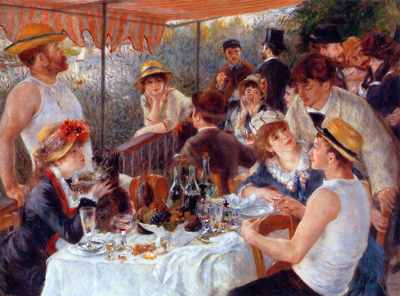 Artist: Pierre-Auguste Renoir 1841-1919
Artist: Pierre-Auguste Renoir 1841-1919
Year Painted: 1881/82
Renoir often included several of his friends in his works, and this one is no exception. Included among many of his friends in this painting, is his future wife Aline Charigot (the one cooing with the dog). Another friend in the painting is the famous French painter Gustave Caillebotte, who is seated in the lower right. Renoir and Aline were married in 1890, five years after the birth of their first son, Pierre. Aline became the love of Renoir’s life, and she is immortalized in many of his other paintings. They later had two more children, Jean and Claude. Although Aline was 23 years younger than her husband, she died four years before Renoir, in 1915. You can see a photograph of the couple later in life here.
Interesting Fact: Two of their sons, Pierre and Jean, became well known actors and film directors. Jean was nominated for an Academy Award for directing the film The Southerner. In 1975 he received a lifetime Academy Award for his contribution to the motion picture industry.
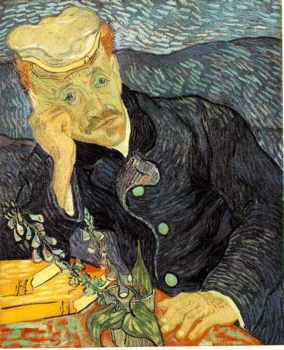 Artist: Vincent van Gogh 1853 –1890
Artist: Vincent van Gogh 1853 –1890
Year Painted: 1890
Dr. Paul Gachet (1828-1909) was a great supporter of artists and the impressionist movement, in part because he, himself, was an amateur painter. The doctor was also friends with, and treated, famous artists such as Pissarro, Renoir, Manet and Cezanne, and amassed one of the largest impressionist art collections in Europe. Dr. Gachet married Blanche Castets in 1868, and had two children, Marguerite and Paul. In May of 1890, after van Gogh was released from an asylum for mental illness, he remained in need of medical supervision. Van Gogh’s brother, Theo, thought that Dr. Gachet was a good choice to treat van Gogh, because of his love for art. During the time van Gogh spent with him, he said this about the physician “sicker than I am, I think, or shall I say as much”. No one really knows what the artist meant by these words, but some believe van Gogh knew the Doctor was not fit to treat him. On July 27, 1890, van Gogh went into a field to paint and shot himself in the chest with a revolver. Dr. Gachet was summoned but his wound was inoperable and van Gogh died two days later. It should be noted that none of van Gogh’s family held Gachet responsible for his patients death.
Interesting Fact: Dr. Gachet practiced his art under the name Paul van Ryssel. His most famous work is a sketch of Van Gogh on his death bed and can be seen here. The doctors son, Paul Louis, became an art dealer after inheriting hundreds of works of art from his father. Like his father, he was also an amateur artist, and painted under the name Louis van Ryssel. He kept the family tradition going by also sketching Van Gogh on his death bed. You can see a see his sketch here.
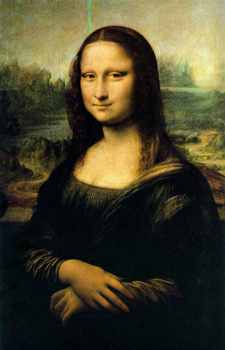 Artist: Leonardo da Vinci 1452 – 1519
Artist: Leonardo da Vinci 1452 – 1519
Year Painted: c-1503-1506
I know this is an obvious choice for number 1, but how could she not be? Even though Mona Lisa’s real name and identity was first linked around 1550, it wasn’t until just a couple of years ago that it was 100% confirmed. Her real name is Lisa del Giocondoa, member of the Gherardini family. She was born in Florence on the 15th of June, 1479, and was the oldest of seven children. At age 15 she married Francesco del Giocondo, a cloth and silk merchant. After some business success in 1503, her husband was able to buy a house next door to his family’s old home, in the Via della Stufa. It is believed that it was then that her portrait was commissioned by her husband, perhaps to celebrate their new house, or maybe to mark Lisa’s 2nd pregnancy. During the painting of Lisa, Da Vinci’s handwritten notes make reference to Lisa’s cheerful personality and her engaging laughter. Lisa and Francesco had five children: Piero, Camilla, Andrea, Giocondo and Marietta. Lisa also raised Bartolomeo, the son of Francesco and his first wife, who died just a year after he was born. Daughters Camilla and Marietta became Catholic nuns. Camilla took the name Suor Beatrice and died at age 18, while Marietta took the name Suor Ludovica, and became a respected member of the convent. Accounts of Lisa and Francesco’s days together differ, but there is no dispute over Francesco’s undying love for his wife, Lisa. Francesco died at the age of 80, around 1538, when the plague swept the city. Some historians claim Lisa died four years later, but same say she lived into her seventies, dying around 1551.
Interesting Fact: In 1506 Leonardo considered the portrait unfinished. He was never paid for the work, and did not deliver it to his client. The painting traveled with him throughout his life, and he most likely completed it many years later in France.
